

Understanding Quantum Dots
Deep dive into how quantum dots work, what makes them unique and how quantum dots provide an extraordinary picture quality for displays.
The nanosized super hero
Quantum dot (QDs) is a scientific term used widely in parts of the consumer electronics business that refers to a relatively new world of technology that
has quietly been taking on a major role in the display industry.
The reason for the high degree of interest is simple: QDs provide an extraordinary picture quality.
Understanding Quantum Dots
These are extremely small semiconductor particles – only 2-10 nanometers (nm) in diameter. Due to their small size, QDs have unique optical and electrical proper-ties. One of the most exciting properties of the QD is the relationship between its size and color. The size and shape of quantum dots can be precisely controlled during manufacturing, thus making this nanotechnology “easy” to scale and excellent for use in a variety of display applications.
There are two primary ways for QD to produce color. First, when energy of a specific wavelength is injected into a QD (the form of light photons). This process is called ‘photoluminescence (PL). The QD is activated and emits light at a precise, narrow spectrum. Second, when electric energy is injected in the form of electrons, which is called ‘electroluminescence (EL)’, the resulting “holes” from the electrodes and the corresponding QDs emit distinctively colored light.
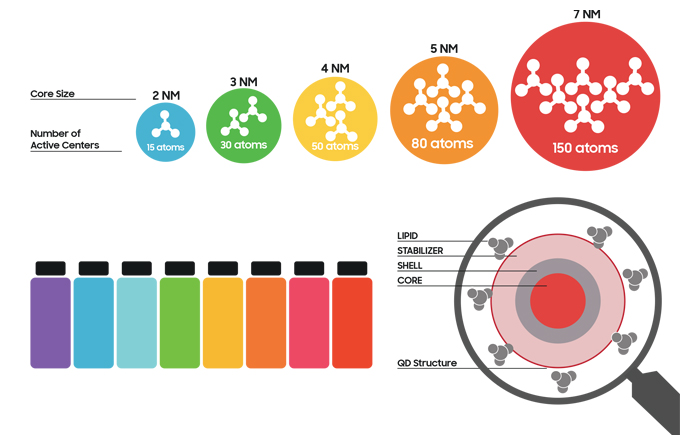
How do quantum dots work?
First, let’s look at the physics behind these phenomena to better understand why quantum dots (QDs) are able to emit light and why the wavelength of the light (which determines specific colors) depends upon the size of the dots themselves.
Photoluminescence occurs when the electrons in QDs become excited. Under the influence of light, the excited electrons will “jump” up to a higher energy band. This is followed by the process of relax- ation, during which photons fall back into a lower-lying state, then recombine and re-radiate in bands of energy.
What researchers refer to as the band gap — which is the difference in energy levels between the top of a valence band and the bottom of the corresponding conduction band ― determines the wavelength of the emitted light.
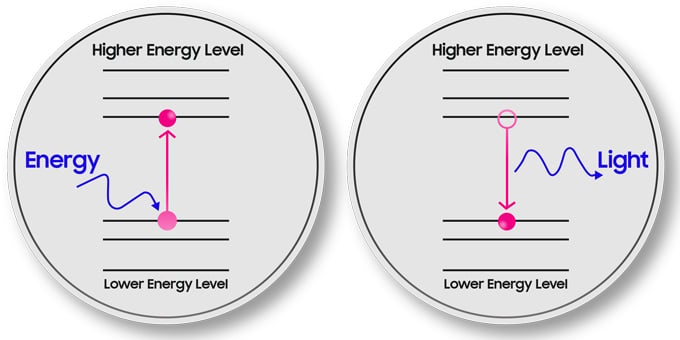
What makes quantum dots unique?
The uniquely controllable properties of quantum dots can be explained by two nano-scale phenomena: the confinement effect, and how the dots can be quantized thanks to the discrete nature of the electronic states of these colorful particles.
Quantum confinement
Quantum confinement effects describe electrons in terms of energy levels and
gaps in electron energy bands. The quantum confinement effect is observed when the size of a crystal is too small to be comparable to its wavelength. In these scenarios, the degree of confinement of an electron and the size of the hole that appears depends on the material properties – particularly the Bohr radius. Hence quantum dot properties are size-dependent, and their excitations are confined in the three spatial dimensions.
The release of confinement energy is the key property of a quantum dot that explains the positive relationship between the size of a QD and the frequency of light it emits.
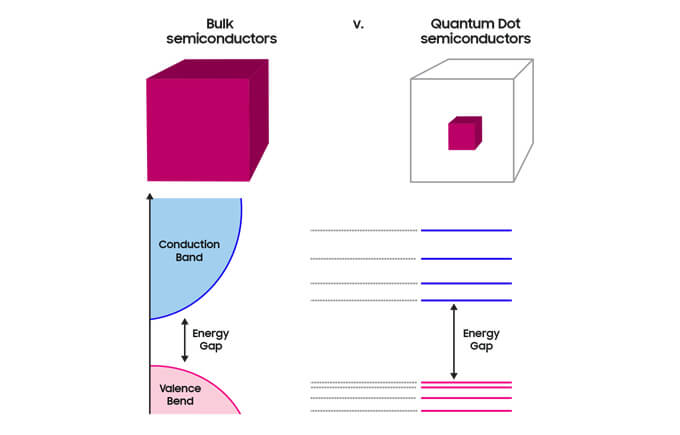
Discrete nature of electronic states (Quantized)
Unlike bulk semiconductors, which have continuous energy levels within bands, the quantum confinement effect creates a large band gap with observable, discrete energy levels. And due to this quantized band gap, a quantum dot can emit a very consistent wavelength of light that can be fine-tuned by changing the size of the quantum dots (or in other words changing the energy levels)
Quantum dot display
Thanks to QDs’ outstanding optical properties, the technology applies very well to display design and manufacturing.
So, let’s tie this quantum physics back to the quantum dots in displays, and see why spherical QDs already work efficiently — due to the exacting ratio between their high surface area and their volume.
Because of this phenomenon, quantum dots can emit a wide range of color of light from the same material as their size is altered. What’s more, due to the high level of control possible over the size of the nanocrystals that are invariably produced, quantum dots can be finely tuned during manufactur- ing to emit the desired color of light in vivid images.
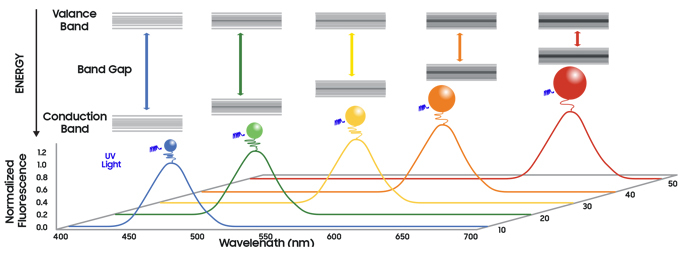
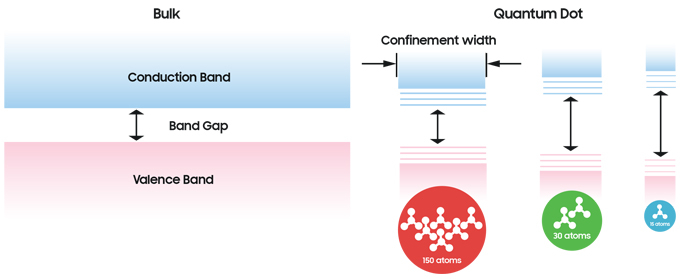
QD-OLED
Harnessing the power of Quantum Dots: Introducing QD-OLED from SDC
Although displays today are not capable of implementing all colors that people can see, BT. 2020. color levels are now achievable with advanced display technology. Therefore, the BT. 2020. standard has become extremely important for measuring display performance. QD-OLED, industry-leading self-emitting display producing blue light with Quantum dots provides the widest BT2020 coverage – 90.3% (TV), 80.7% (MNT).
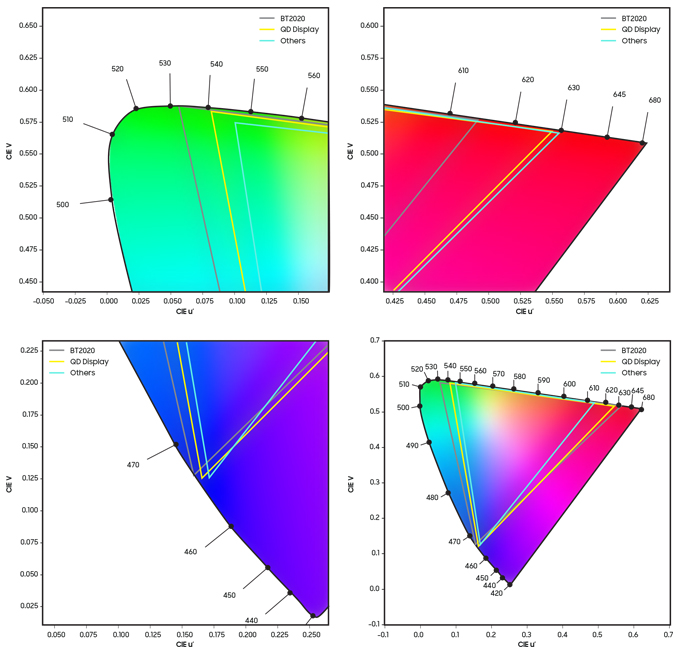
How do Quantum Dot narrow-band emissions produce better colors?
Another concern in producing the three primary colors of a display is minimizing the problem of mixing colors. For example, if you measure the red light of a display, you can see a number of adjoining color wavelengths.
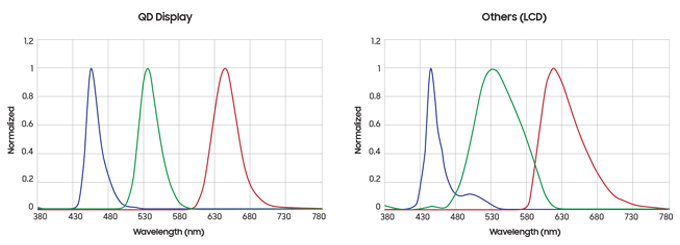
Fortunately, there is an important and clear difference between the QD-OLED and other displays – the QD-OLED from Samsung Display produces highly desirable industry leading narrow-band wavelength.
Compared to other displays, a QD-OLED can produce the slimmest wavelength of the three primary colors, and can significantly reduce the mixing undesirable wavelengths. The secret lies in the high degree of efficiency of the quantum dot itself.
Conclusion
This article has covered the basic functions and principles of Quantum Dot technology and how it can be applied to displays today. As science and technology are still evolving in the area of display applications, further challenges with implementing QDs and improving their structure, remain to be seen. However, if past successes are any indication, QD-OLED technology is likely to improve even further over time.
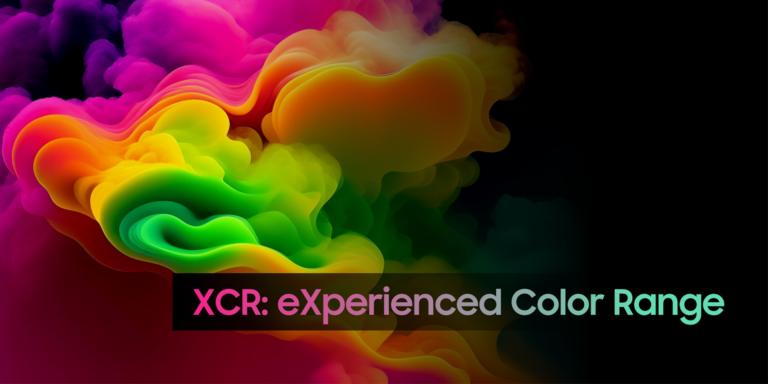

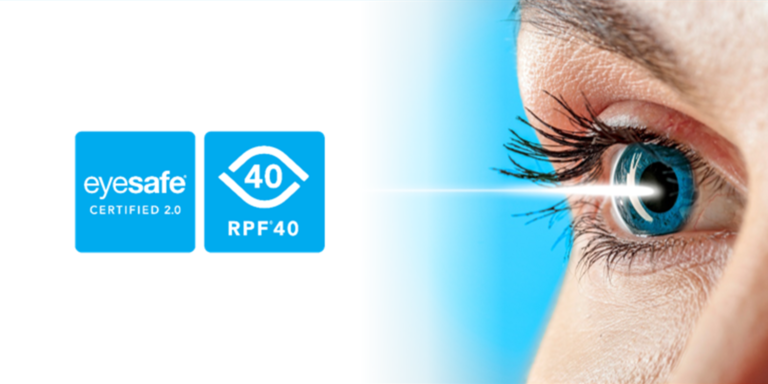
22 thoughts on “Understanding Quantum Dots”
Comments are closed.